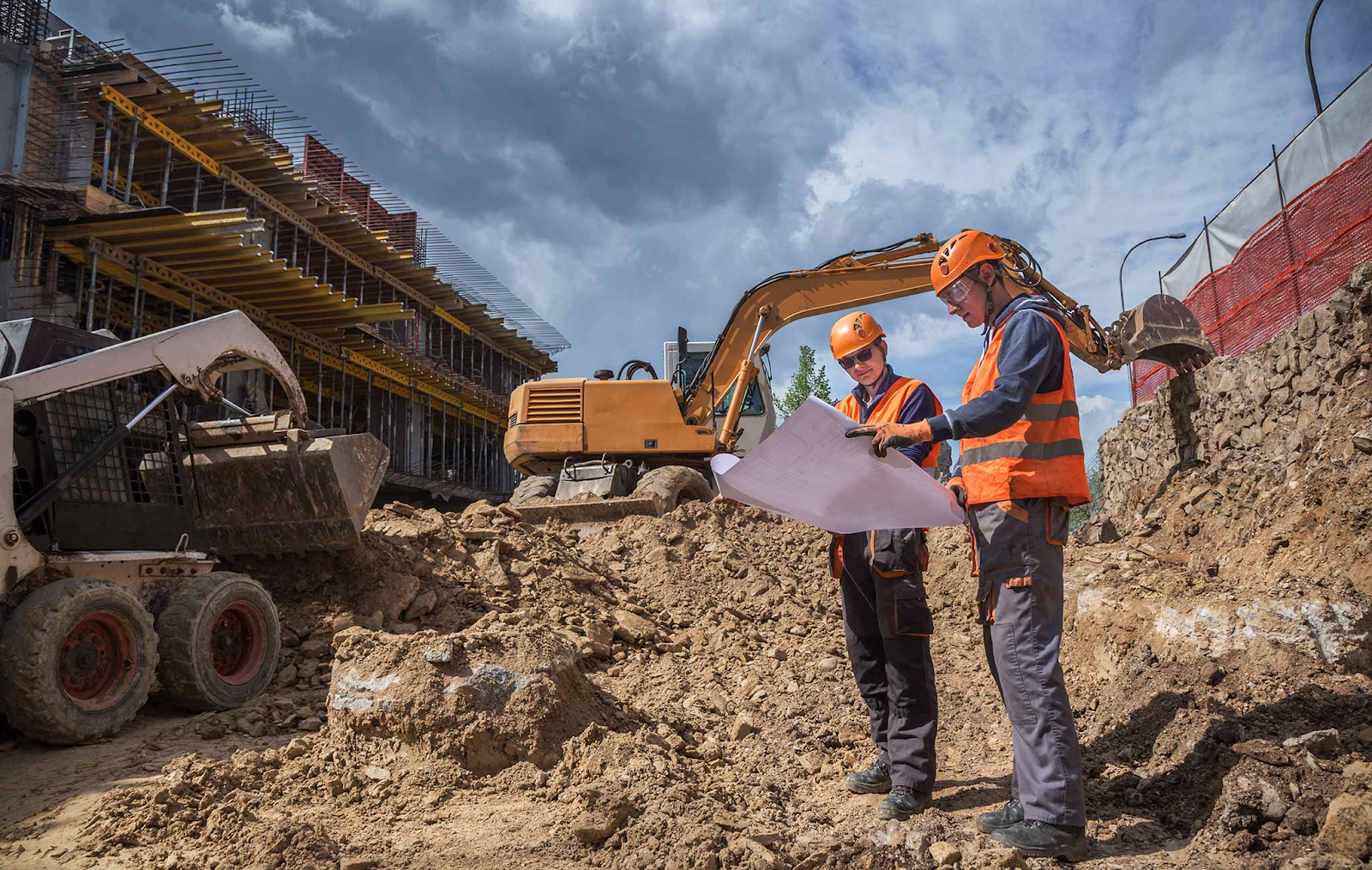An Unbiased View of Geotechnical Engineering For Construction Projects
An Unbiased View of Geotechnical Engineering For Construction Projects
Blog Article
Excitement About Geotechnical Engineering For Construction Projects
Table of ContentsExcitement About Geotechnical Engineering For Construction ProjectsNot known Details About Geotechnical Engineering For Construction Projects Geotechnical Engineering For Construction Projects - The FactsSome Known Questions About Geotechnical Engineering For Construction Projects.About Geotechnical Engineering For Construction ProjectsNot known Facts About Geotechnical Engineering For Construction ProjectsThe Greatest Guide To Geotechnical Engineering For Construction Projects
Concepts and Practice of Ground Improvement. Ground Renovation Concepts And Applications In Asia. Layout analysis in rock auto mechanics.Cengage Understanding, Stamford, 666 p. Atkinson, J., 2007. The technicians of dirts and structures. The Observational Technique in ground engineering principles and applications.
What Does Geotechnical Engineering For Construction Projects Mean?
Research laboratory and field screening plays a vital role in this procedure. By extracting samples from the planet's subsurface and applying a collection of tests, geotechnical engineers can forecast the behaviour of soil layers and assess their viability for various building and construction endeavours. The essence of geotechnical design in civil design can not be overemphasized, attributable to several variables: The preliminary action in any geotechnical study includes figuring out the soil type at the building website.
The foundation acts as the bedrock of any type of building and construction project. Selecting the appropriate structure kind is a choice that pivots on the thorough evaluation supplied by geotechnical engineering.

Geotechnical site investigation is a crucial step in the planning and implementation of any building project. It involves the collection and evaluation of information connected to the physical residential properties of dirt and rock underneath a suggested construction website. This info is important for the design and building and construction of risk-free, steady, and sustainable frameworks.
Geotechnical Engineering For Construction Projects - An Overview
In this blog site, we will look into the relevance of geotechnical site examination, its numerous elements, and just how it benefits building and construction projects. Geotechnical website investigation, likewise referred to as subsurface exploration, includes a collection of activities intended at establishing the soil, rock, and groundwater conditions at a building and construction site. The main purposes are to identify prospective geotechnical threats, assess the design homes of subsurface products, and supply recommendations for the style and building and construction of structures, maintaining wall surfaces, and various other frameworks.
This might consist of geological maps, airborne photos, previous examination records, and historic information. The workdesk research aids in recognizing possible geotechnical concerns and planning the subsequent fieldwork. Following the workdesk research, a site reconnaissance is performed to visually examine the site and its surroundings. This entails observing the topography, drain patterns, existing frameworks, greenery, and any signs of instability or erosion.
How Geotechnical Engineering For Construction Projects can Save You Time, Stress, and Money.
Superficial test pits are dug deep into to directly observe and sample the dirt and rock. This technique works for researching the upper layers of the subsurface and determining near-surface risks. Non-invasive geophysical techniques, such as seismic refraction, ground-penetrating radar (GPR), and electric resistivity tomography (ERT), are used to map subsurface problems and detect abnormalities.
Soil and rock samples accumulated throughout the field examination are subjected to lab screening to determine their physical and mechanical residential or commercial properties. Typical laboratory tests include grain dimension evaluation, Atterberg restrictions, compaction tests, triaxial shear examinations, and consolidation examinations. These tests give vital data for geotechnical analysis and design. The information accumulated from the workdesk study, site reconnaissance, area investigation, and laboratory testing are examined and analyzed to develop a detailed understanding of the subsurface problems.
The main advantage of geotechnical site investigation is ensuring the security and security of structures. By understanding the subsurface conditions, engineers can design foundations and various other structural aspects that can stand up to the tons and environmental forces they will be subjected to. This minimizes the risk of negotiation, decrease, and architectural failure.
10 Easy Facts About Geotechnical Engineering For Construction Projects Explained
This makes sure effective and secure construction methods. Geotechnical site examinations are often needed by constructing codes and laws.
This link information is indispensable for job supervisors, architects, and professionals in creating reasonable timetables, budgets, and contingency plans. Geotechnical Engineering for Construction Projects. High-Rise Structure in a Coastal AreaIn a seaside city, a skyscraper residential building was intended on a site with presumed loosened sand down payments and a high water table. A detailed geotechnical investigation, including borehole drilling, CPT, and geophysical useful site surveys, was performed
The 25-Second Trick For Geotechnical Engineering For Construction Projects
Based upon these findings, the structure style was changed to consist of deep pile structures expanding right into steady strata, and ground improvement strategies, such as vibro-compaction, were carried out to mitigate liquefaction dangers. This proactive strategy made sure the security and security of the structure while preventing costly post-construction removal. Facilities Growth on a Sloping TerrainA significant facilities task, including the construction of a freeway and bridges, was intended on an uneven surface with steep inclines.

The Leaning Tower of Pisa (Italy), a renowned building wonder, is infamous for its unintentional tilt from significant geotechnical concerns. The tower's foundation was inadequately made to take care of the soft, unsteady soil underneath it, leading to unequal negotiation and its distinctive lean. Our globe is dotted with excellent infrastructure projectsfrom towering high-rise buildings to stretching bridgesall click here now standing statement to the evolution of the numerous building equipment and approaches offered.
Geotechnical design is a specialized field within civil design that concentrates on examining the actions of planet materials. This branch delves deep right into the groundinvestigating just how the soil, rock, and groundwater at a building website can influenceand be influenced bythe facilities that we put up on and right into them. Before a single brick is laid or a concrete structure put, geotechnical designers probe into the earthgathering important data concerning the website's dirt composition, rock structure, and groundwater levels.
The Basic Principles Of Geotechnical Engineering For Construction Projects

is a tool utilized to evaluate the stability and load-bearing capability of stacks during setup, leveraging the concept of wave breeding. It maximizes building and construction performance by giving real-time examinations, therefore making sure risk-free and efficient stack foundations. Among the sensible applications of geotechnical design entails making a decision and carrying out the appropriate approaches for structure building.
Pile driving represents even more than the plain act of putting architectural aspects into the ground. On the contrary, it is a thoroughly orchestrated process of moving a framework's load past the much less steady dirt layers more detailed to the surfacedown to the extra considerable strata that exist beneath. When it comes to heap driving, take into consideration exactly how geotechnical engineers expertly utilize this method to evenly disperse the structure's weight.
Report this page